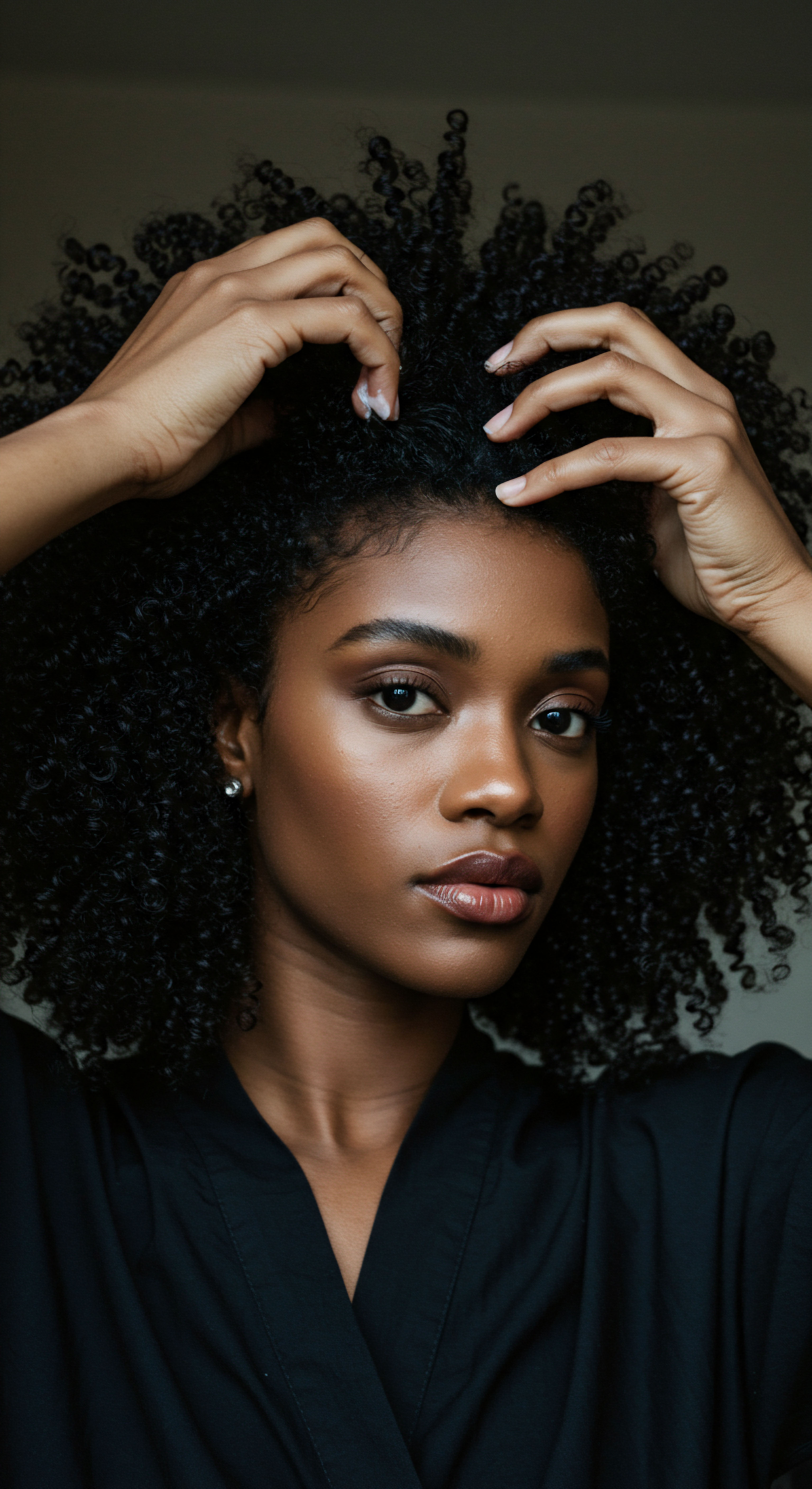
Roots
The strands that crown us, whether they coil tightly or ripple in gentle waves, carry stories. They speak of lineage, of sun-drenched lands, of ancestral practices passed through whispers and patient hands. When we consider something as seemingly simple as how a natural dye might affect a curl, we are not merely contemplating a superficial change. We are touching upon the very essence of hair’s architecture, its memory, and the delicate balance that allows it to express itself in its unique, captivating form.
This quiet inquiry, “Can the weight of natural dye impact curl definition?”, invites us to look beyond the immediate visual and into the heart of what makes textured hair so beautifully distinct. It asks us to consider not just the dye, but the strand itself—a tiny marvel of biological engineering.
Our exploration begins with the foundational understanding of hair, a complex protein filament that belies its slender appearance. At its heart, every strand of hair, particularly textured hair, is a masterpiece of design, sculpted by genetics and environment. Understanding this intrinsic structure is the first step in appreciating how external applications, even those derived from nature, can interact with its inherent character.
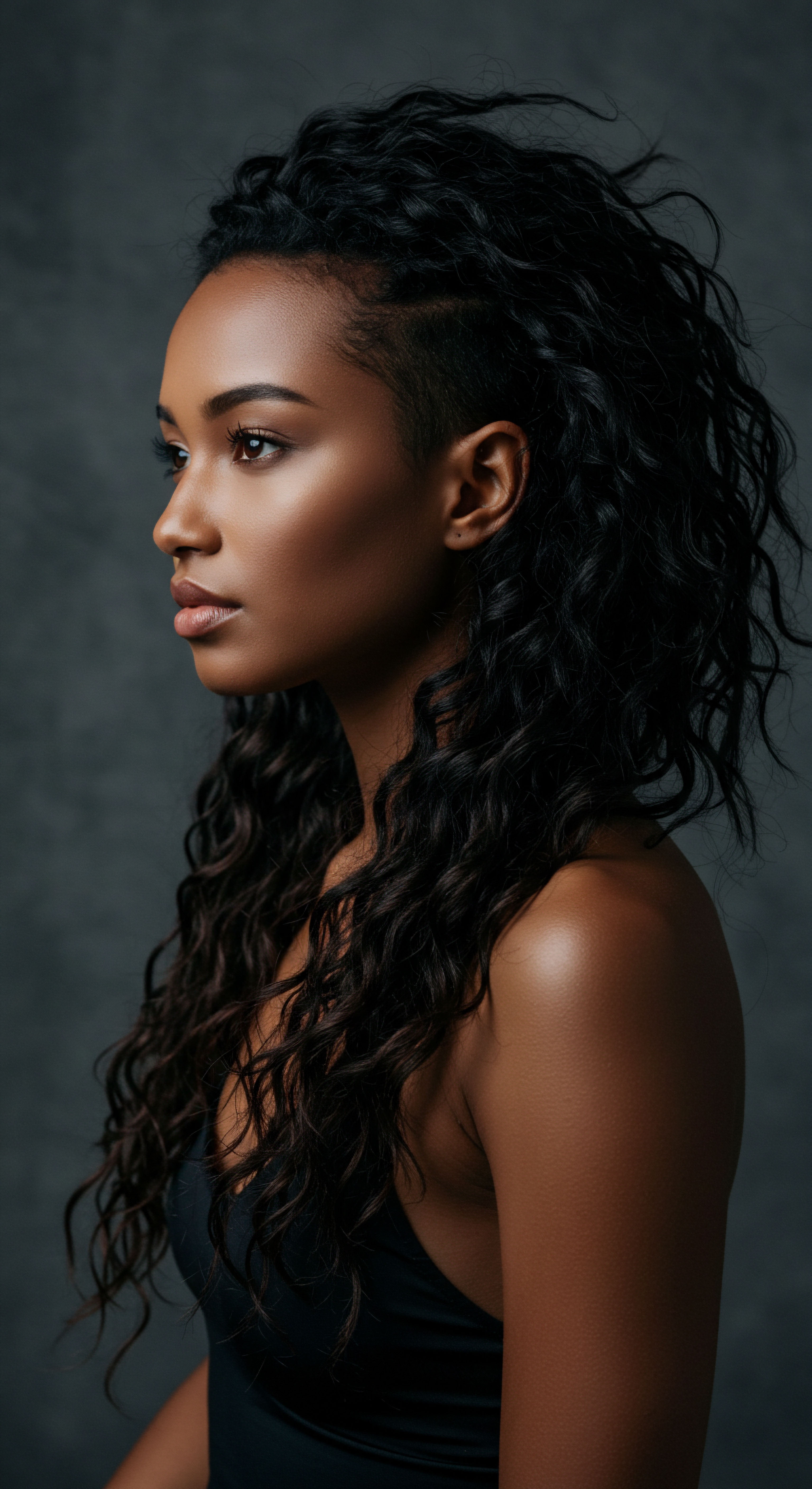
Hair Anatomy and Physiology Specific to Textured Hair
A single hair strand, a slender column, comprises three principal layers ❉ the medulla, the cortex, and the cuticle. The Medulla, the innermost core, may or may not be present in all hair types, particularly finer strands. Surrounding this is the Cortex, the substantial middle layer. This is where the magic of hair’s character truly resides.
The cortex contains the majority of hair’s keratin protein, alongside melanin, the pigment responsible for our natural hair color. The arrangement of keratin proteins within the cortex, specifically the distribution of disulfide bonds, plays a paramount role in determining a curl’s shape. In textured hair, these bonds are unevenly distributed, creating areas of varying tension along the strand, which causes it to coil or wave.
The outermost shield is the Cuticle, a protective layer composed of overlapping, scale-like cells, much like shingles on a roof. These scales lie flat on healthy, smooth hair, reflecting light and offering a resilient barrier. However, in textured hair, these cuticle scales naturally lift more readily due to the bends and curves of the strand.
This inherent characteristic means textured hair often presents with higher porosity, allowing substances to enter and exit the hair shaft more easily, but also rendering it more vulnerable to moisture loss and external influences. The condition of this cuticle layer is central to how hair receives and holds moisture, how it resists breakage, and how well it maintains its curl pattern.
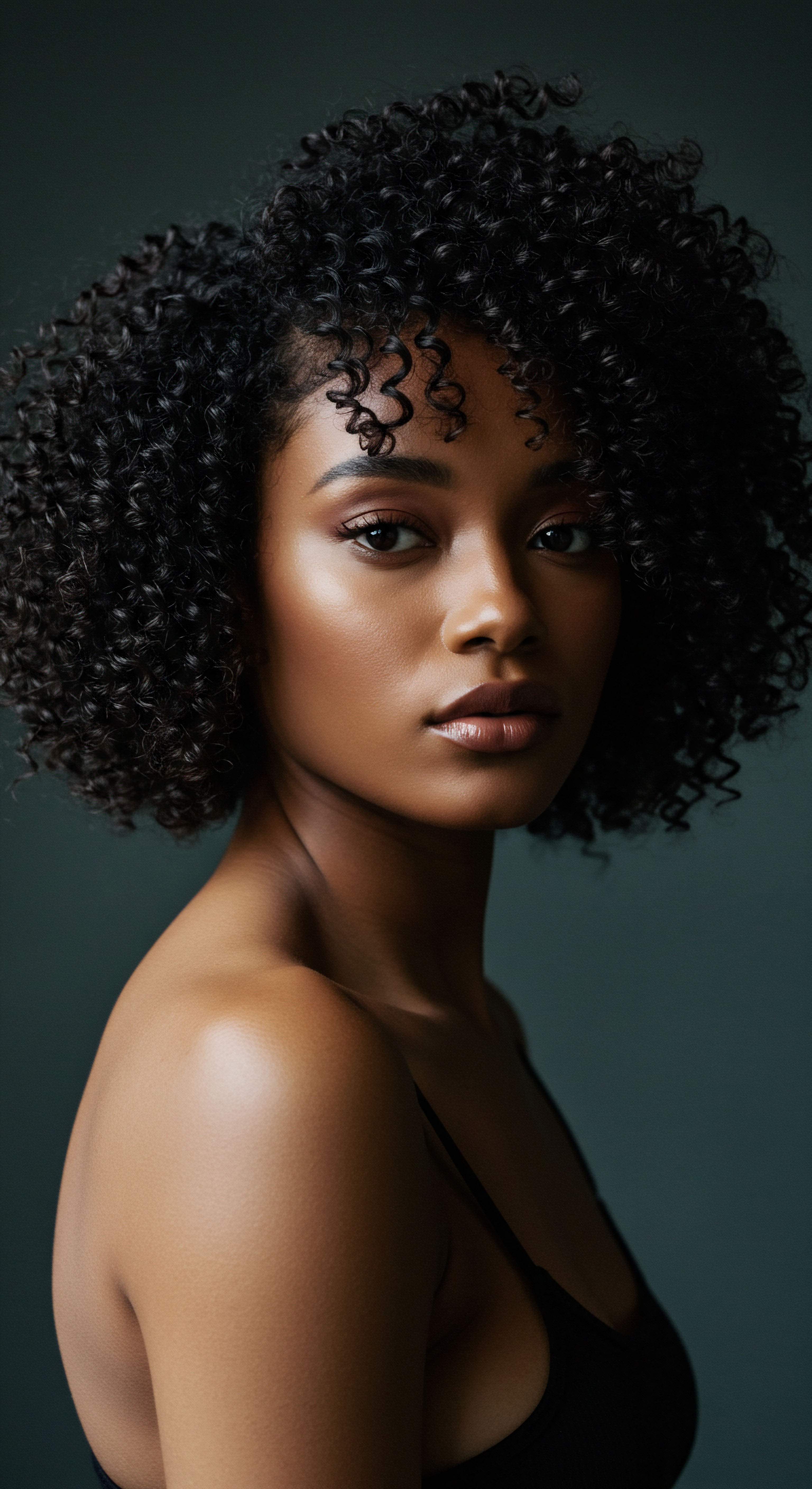
Textured Hair Classification Systems
The world of textured hair is wonderfully diverse, often categorized by various systems that attempt to describe its curl pattern. While no system can fully capture the individuality of each head of hair, they offer a common language for discussion. The most widely recognized system categorizes hair from straight (Type 1) to wavy (Type 2), curly (Type 3), and coily (Type 4), with further sub-classifications (A, B, C) indicating the tightness of the pattern.
- Type 2 Hair ❉ Ranges from a gentle S-bend (2A) to more defined waves that hug the head (2C).
- Type 3 Hair ❉ Displays distinct curls, from loose spirals (3A) to springy, tight corkscrews (3C).
- Type 4 Hair ❉ Characterized by tight coils, often forming Z-patterns (4A) or densely packed, sometimes almost invisible, coils (4C).
This classification is more than just an aesthetic label; it hints at the unique care requirements of each pattern. Tighter coils, for instance, tend to be more prone to dryness and shrinkage due to the challenges of natural oils traveling down the spiral, and the increased number of cuticle lifts along each bend.

The Essential Lexicon of Textured Hair
To speak with clarity about textured hair, a shared understanding of terms proves beneficial. Beyond the curl types, we consider concepts such as Porosity, which describes hair’s capacity to absorb and retain moisture. High porosity hair, with its raised cuticles, absorbs water quickly but loses it just as rapidly. Low porosity hair, with tightly bound cuticles, resists water entry but holds onto it once absorbed.
Then there is Elasticity, the hair’s ability to stretch and return to its original state without breaking, a sign of healthy, resilient strands. Shrinkage, the apparent reduction in length of wet hair as it dries, is a hallmark of textured patterns, a testament to the hair’s coiled nature. These terms allow for a precise discussion of hair’s responses to care, products, and indeed, natural dyes.

Hair Growth Cycles and Influencing Factors
Hair is not static; it lives through a continuous cycle of growth, rest, and shedding. This cycle has three main phases:
- Anagen ❉ The active growth phase, lasting from two to seven years.
- Catagen ❉ A transitional phase, lasting about ten days, where growth ceases.
- Telogen ❉ The resting phase, lasting around three months, after which the old hair sheds and new hair begins to grow.
Numerous factors influence this cycle, including genetics, nutrition, stress, and overall health. For those with textured hair, understanding these rhythms can help set realistic expectations for length retention and overall hair health. The journey of a single strand, from its follicular origin to its eventual release, is a testament to the dynamic nature of our hair.
The intricate design of each hair strand, particularly in textured patterns, dictates its interaction with the world, making understanding its anatomy and inherent behaviors a foundational step in any hair care consideration.

Ritual
The desire to adorn and alter our appearance, including the color of our hair, is a practice as old as humanity itself. For generations, cultures across the globe have turned to the earth’s bounty for pigments, transforming strands with the hues of nature. This enduring ritual, often rooted in tradition and community, brings a unique connection to our personal care. Yet, as we apply these time-honored concoctions, a subtle question arises ❉ how do these natural elements, in their gentle application, interact with the inherent spring and bounce of our curls?
This section steps into the practical wisdom of using natural dyes, particularly examining how their very presence might subtly influence the definition and movement of textured hair. It’s about recognizing the art in the application, and the science in the subtle shifts.
Natural dyes, unlike their synthetic counterparts, typically do not penetrate the hair cortex as deeply. Instead, they often deposit their pigments on the outer layers of the hair shaft, creating a coating. This surface action is often celebrated for being less damaging than chemical processes that lift the cuticle and strip natural pigment. However, this very characteristic of natural dyes introduces a different dynamic, one that can indeed play a role in how curls present themselves.
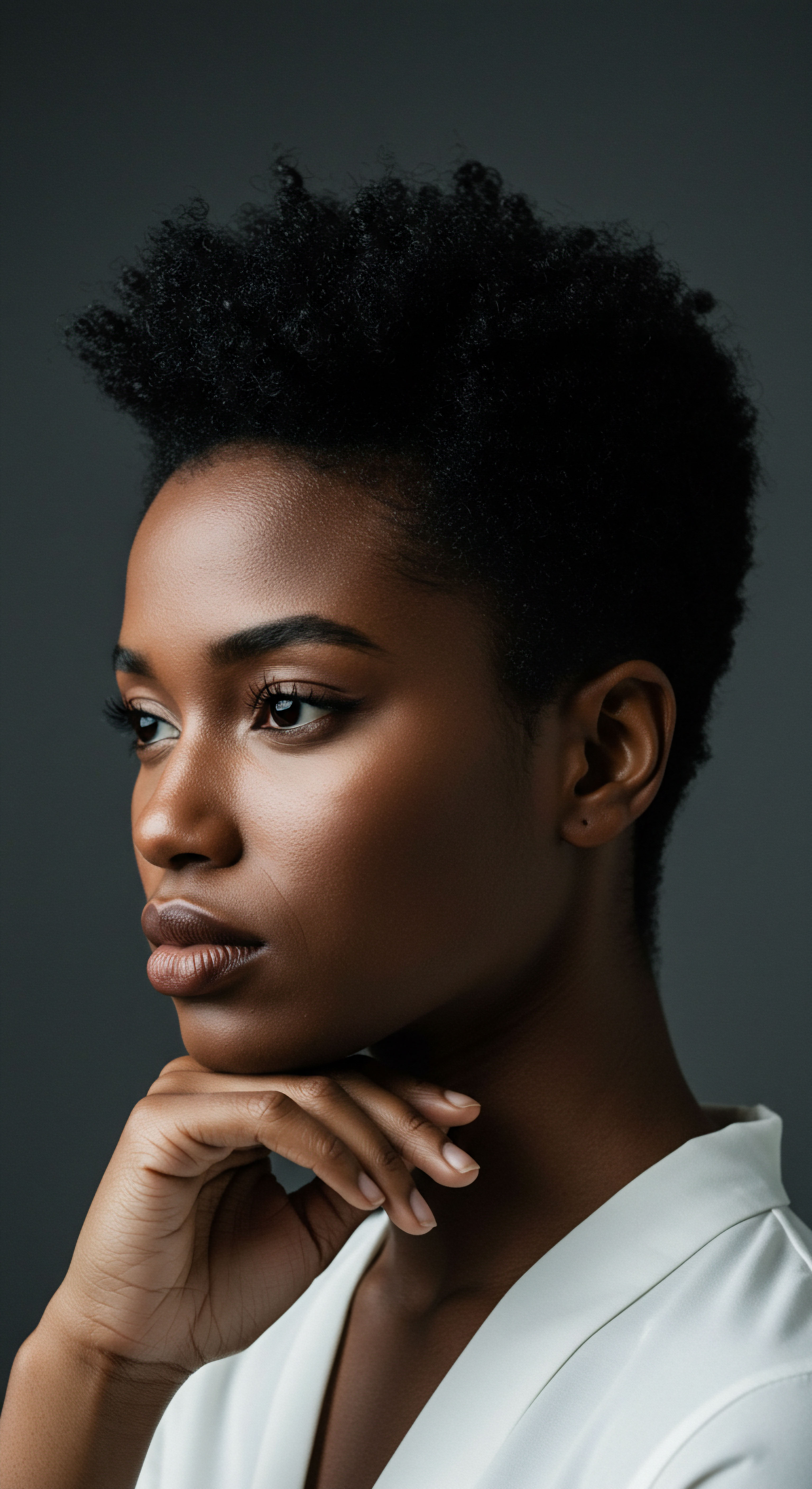
How Do Natural Dyes Interact With Hair?
The interaction between natural dyes and hair is a dance of chemistry and physics. Take Henna, derived from the Lawsonia inermis plant, as a prime example. Its active coloring molecule, lawsone, binds to the keratin protein in the hair through a process called Michael addition.
This creates a lasting color, but it also means that the lawsone molecules become an integral part of the hair’s outer structure. This addition of material, even at a molecular level, can alter the hair’s surface properties.
Other natural dyes, such as indigo or cassia, function differently. Indigo, often used in conjunction with henna to achieve darker shades, also deposits on the hair shaft, providing blue tones. Cassia, while not a true dye, offers a golden hue and can act as a conditioning treatment, adding a subtle coating. The collective presence of these deposited plant pigments, especially with repeated applications, builds a layer around each hair strand.
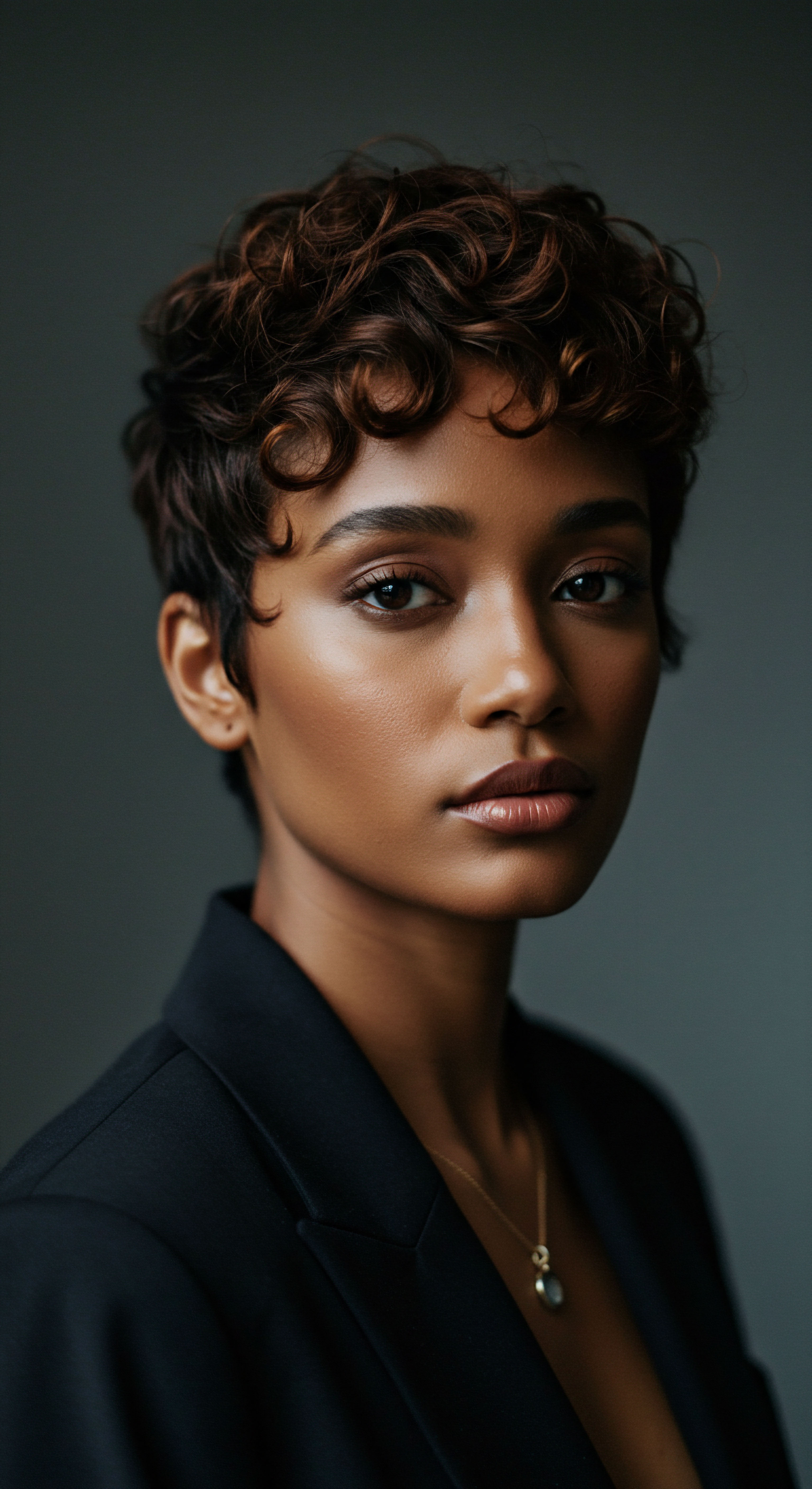
Can the Application of Natural Dyes Alter Curl Pattern?
While natural dyes do not chemically break down the disulfide bonds that give curls their shape, the physical presence of the dye on the hair shaft can certainly influence curl definition. Think of it like this ❉ a delicate spring will respond differently if a thin, almost imperceptible film begins to coat its surface.
When lawsone from henna, or other plant pigments, binds to the keratin and forms a layer, it can subtly increase the diameter of the individual hair strand. This added circumference, though microscopic, can lead to a slight reduction in the hair’s natural elasticity and flexibility. A strand that is slightly thicker and less pliable may find it more challenging to coil into its original, tight formation. This is not about the dye having a literal “weight” that pulls the curl down, but rather about the alteration of the hair shaft’s physical properties.
The ritual of applying natural dyes, particularly henna, can subtly influence curl definition by depositing a layer of pigment on the hair shaft, altering its flexibility and how it coils.
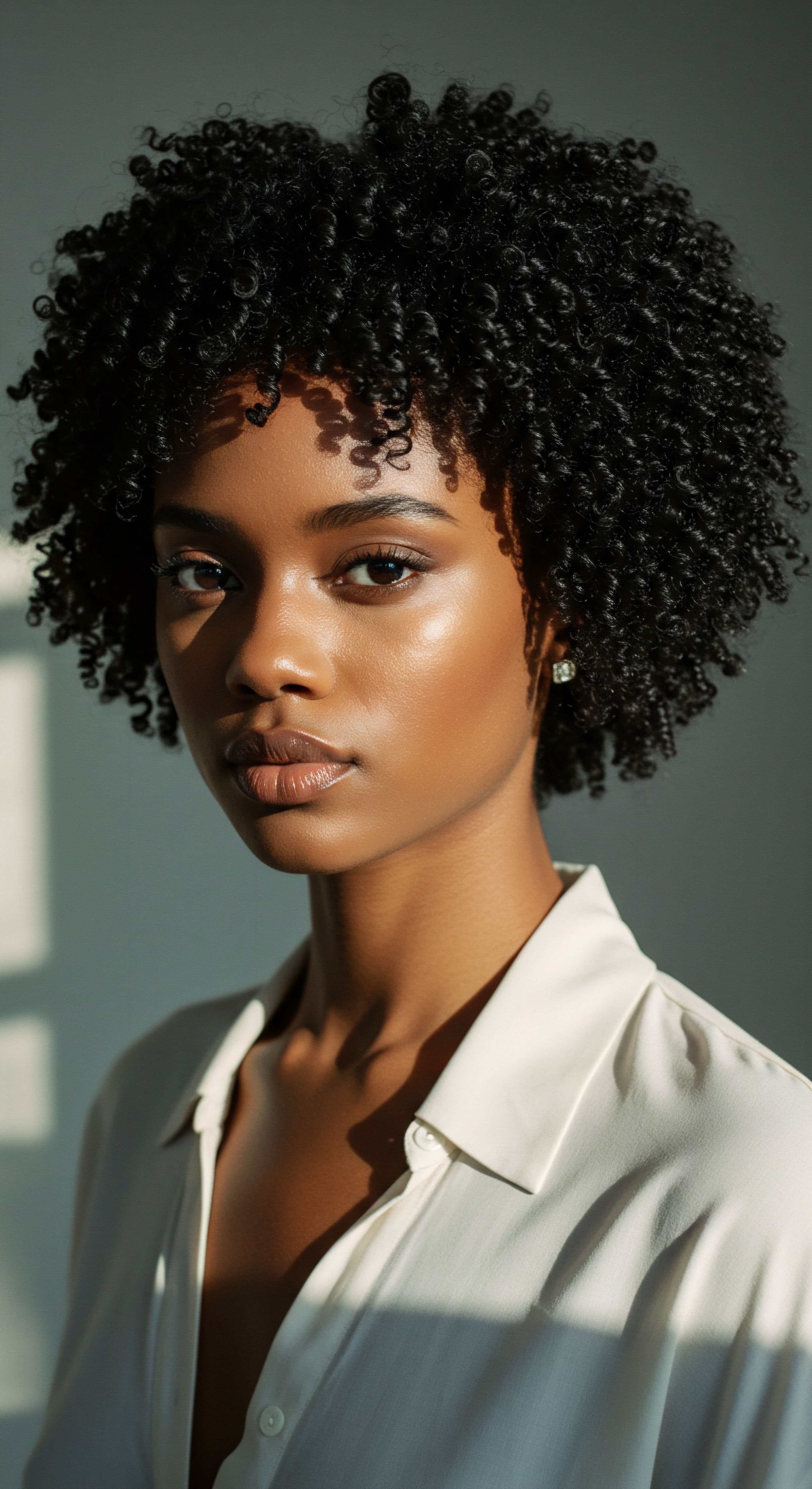
Managing Curl Definition with Natural Dyes
For those who cherish their curl definition yet wish to color with natural dyes, a thoughtful approach is paramount. The key lies in understanding that less can often be more, and preparation matters as much as the application itself.
- Prepare Your Hair ❉ Begin with thoroughly cleansed hair, free of product buildup. This ensures the dye can adhere uniformly. Consider a clarifying wash before your dye application.
- Mixing and Consistency ❉ The consistency of your natural dye paste can play a role. A paste that is too thick may sit heavily on the hair, potentially weighing down curls more than a smoother, lighter consistency. Aim for a yogurt-like texture.
- Application Technique ❉ Apply the dye with care, ensuring even coverage without excessive layering, particularly on areas where curl definition is most prized. Some find sectioning the hair precisely helps in managing application.
- Rinsing and Aftercare ❉ The rinsing process is vital. Ensure all dye particles are completely removed from the hair. Any residual dye can continue to coat the strands, potentially contributing to stiffness. Follow with a moisturizing conditioner or a deep conditioning treatment to restore suppleness.

The Importance of Hydration and Moisture
Natural dyes, especially henna, can sometimes leave the hair feeling drier due to their protein-binding action and the potential for a slightly increased cuticle lift during the dyeing process. This dryness can directly impact curl definition, as well-defined curls are inherently well-hydrated curls. To counter this, a robust moisturizing regimen becomes even more important.
Consider incorporating humectant-rich products, like those containing glycerin or aloe vera, into your routine. Regular deep conditioning treatments are also beneficial, helping to restore the hair’s moisture balance and maintain its natural bounce. The goal is to provide ample hydration that allows the hair shaft to remain supple, mitigating any stiffening effects from the dye.
| Aspect of Application Thick Paste Consistency |
| Potential Effect on Curl Definition May sit heavier on strands, potentially diminishing coil spring. |
| Aspect of Application Repeated Applications |
| Potential Effect on Curl Definition Cumulative layering of pigment can increase hair diameter, reducing flexibility. |
| Aspect of Application Incomplete Rinsing |
| Potential Effect on Curl Definition Residual dye particles can coat hair, leading to stiffness and less bounce. |
| Aspect of Application Lack of Post-Dye Hydration |
| Potential Effect on Curl Definition Hair may feel drier, causing curls to appear less defined and more brittle. |
| Aspect of Application Thoughtful application and aftercare are key to preserving curl vibrancy when using natural dyes. |

Relay
Beyond the visible shifts in color and the tactile experience of newly dyed strands, a deeper inquiry into natural dyes and curl definition invites us to consider the microscopic dance occurring within each hair shaft. Is it simply a matter of added mass, or does the story unfold with greater complexity, intertwining biochemical interactions with the hair’s inherent architecture? This section delves into the scientific underpinnings and less commonly discussed implications of natural dyes on textured hair, moving past anecdotal observations to a more profound understanding. It is here that we connect the delicate art of natural coloring with the rigorous insights of scientific exploration, revealing the nuanced relationship between pigment, protein, and pattern.
The perception that natural dyes are universally benign often overlooks their profound interaction with the hair’s fundamental building blocks. While they avoid the harsh chemical reactions of synthetic dyes, their unique mechanisms of action can still significantly influence the hair’s mechanical properties, which directly affect curl integrity.

Does Lawsone from Henna Chemically Alter Keratin?
The primary coloring agent in henna, lawsone (2-hydroxy-1,4-naphthoquinone), does not merely sit on the hair surface; it forms a chemical bond with the keratin protein. This reaction, specifically a Michael addition, results in a permanent color change. When lawsone molecules bind to the amino acids within the keratin structure, particularly cysteine residues, they become an intrinsic part of the hair fiber. This chemical integration is distinct from a simple coating.
This bonding can influence the hair’s flexibility and tensile strength. A study using Scanning Electron Microscopy (SEM) to evaluate hair dyed with Lawsonia inermis powder observed a “positive impact on the cuticula pattern and on the diameters of the examined samples, after henna application.” This suggests that henna application can indeed lead to a measurable increase in hair shaft diameter, which, while strengthening the hair, could simultaneously reduce its natural elasticity and its ability to coil tightly. The increased diameter and altered cuticle structure, resulting from lawsone’s integration, mean the hair strand might experience greater stiffness. This stiffness, not sheer weight, is the primary mechanism by which curl definition can appear diminished.
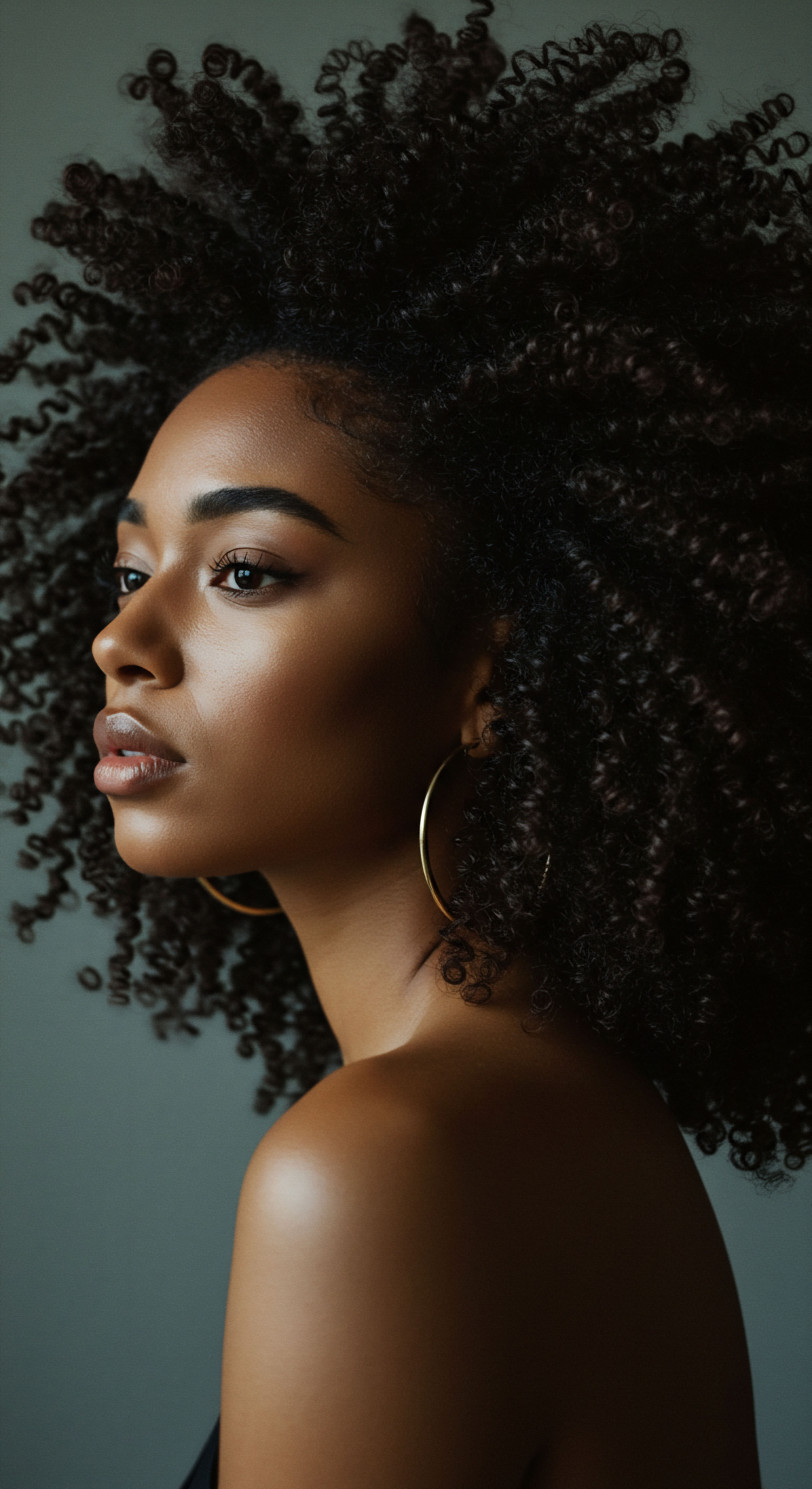
How Do Metallic Salts in Some Natural Dyes Influence Curl Structure?
A less acknowledged aspect of natural dyes involves formulations that incorporate metallic salts, often marketed as “compound hennas” or “metallic dyes.” These are not pure plant-based dyes. Common metallic salts include lead acetate, silver nitrate, and copper. While they can produce various shades, their interaction with hair is far more aggressive and potentially damaging than pure plant dyes.
Metallic salts react with the sulfur atoms in hair’s keratin, creating a metallic layer on and within the hair shaft. This layer can render the hair stiff, brittle, and significantly reduce its natural elasticity. For textured hair, this can be catastrophic to curl definition, causing curls to loosen, become limp, or even straighten permanently in some sections.
The hair becomes resistant to subsequent chemical treatments, such as perms or relaxers, and can even react violently with oxidative dyes, leading to breakage or undesirable color changes. This interaction highlights that the term “natural dye” requires careful scrutiny of ingredients.

The Interplay of Porosity, Elasticity, and Dye Deposition
The innate characteristics of textured hair, particularly its often higher porosity, play a significant role in how natural dyes perform and impact curl definition. Hair with higher porosity has more open cuticle layers, allowing the lawsone molecules (from henna) or other plant pigments to enter the hair shaft more readily. While this can lead to deeper color saturation, it also means a greater potential for the dye to deposit and build up within the hair over repeated applications.
This cumulative deposition, even of natural substances, can decrease the hair’s natural elasticity. Elasticity is crucial for curl formation; it allows the hair to stretch and spring back into its coiled shape. If the hair shaft becomes less pliable due to the internal and external accumulation of dye particles, the curl’s ability to bounce back is compromised, leading to a looser or less defined pattern. It is a delicate equilibrium where the desire for color meets the hair’s inherent need for flexibility.
The impact of natural dyes on curl definition is not merely about added mass, but a complex interplay of chemical bonding with keratin and the physical accumulation of pigment, which can alter hair’s flexibility and elasticity.
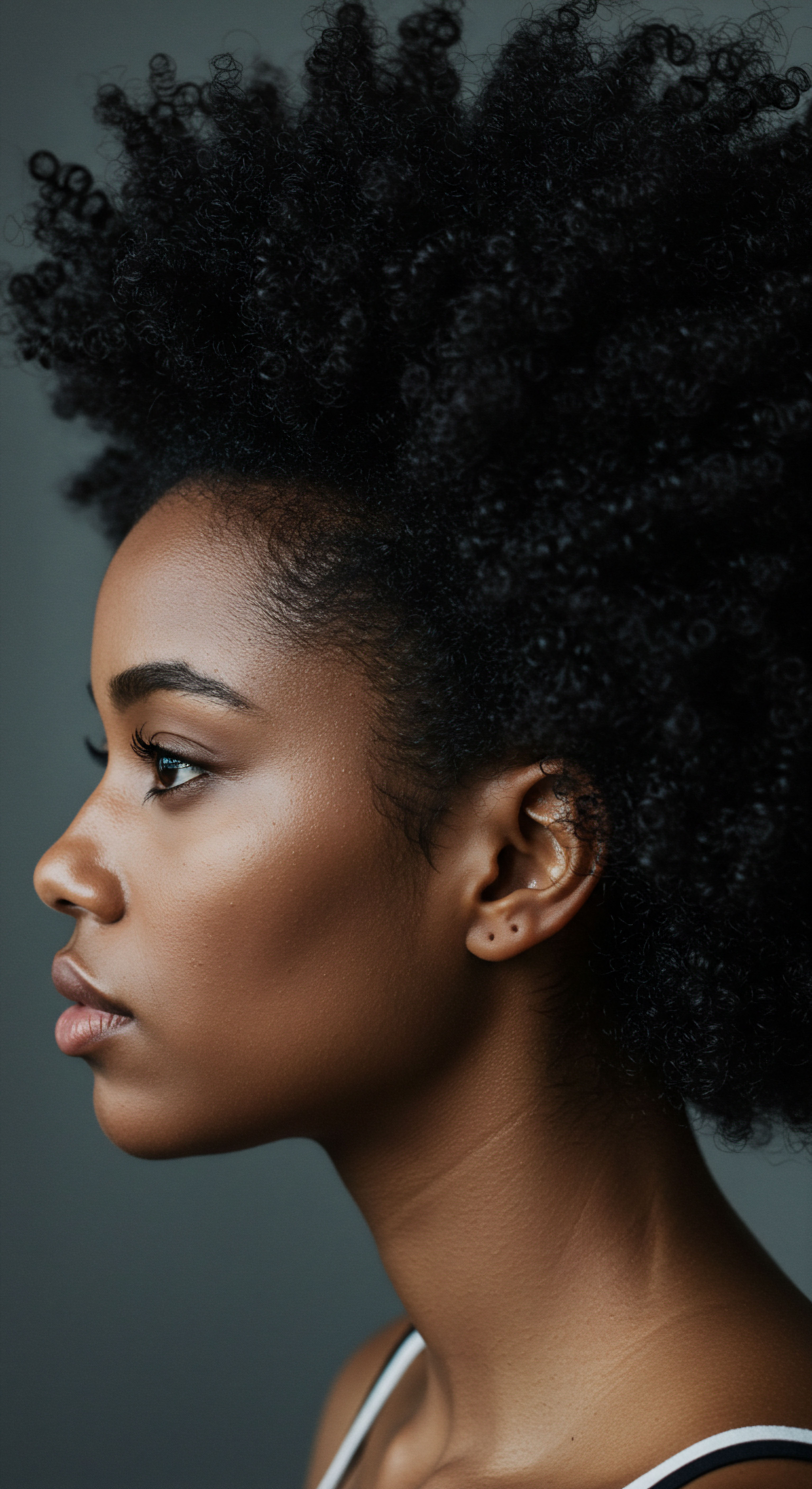
Beyond the Curl ❉ Broader Implications for Hair Health
While the primary concern here is curl definition, the discussion of natural dyes and their interaction with hair extends to overall hair health. The perception that “natural” equates to “harmless” can be misleading. A study on hair dye use found that while a majority of users perceived natural dyes as safe, a significant percentage (42%) still reported adverse reactions, with headache and itching being common. This underscores the importance of patch testing and understanding individual sensitivities, even to plant-based products.
The effect of natural dyes on hair’s moisture balance is another critical consideration. Henna, for instance, can sometimes leave hair feeling drier. Dryness, irrespective of the dye’s “weight,” is a primary enemy of curl definition.
When hair lacks sufficient moisture, it becomes brittle, loses its elasticity, and its curls become limp and prone to frizz. Therefore, a holistic approach to using natural dyes on textured hair must include a rigorous hydration regimen to counteract any drying effects and maintain the hair’s suppleness, which is essential for vibrant curls.
Ultimately, the impact of natural dyes on curl definition is not a simple matter of added “weight.” It is a sophisticated interaction involving the chemical binding of lawsone to keratin, the physical deposition of plant pigments, the cumulative effect of repeated applications, and the individual hair’s porosity and elasticity. For the textured hair community, this means approaching natural dyeing with both appreciation for tradition and a grounded understanding of the science, allowing for informed choices that honor both color and curl.
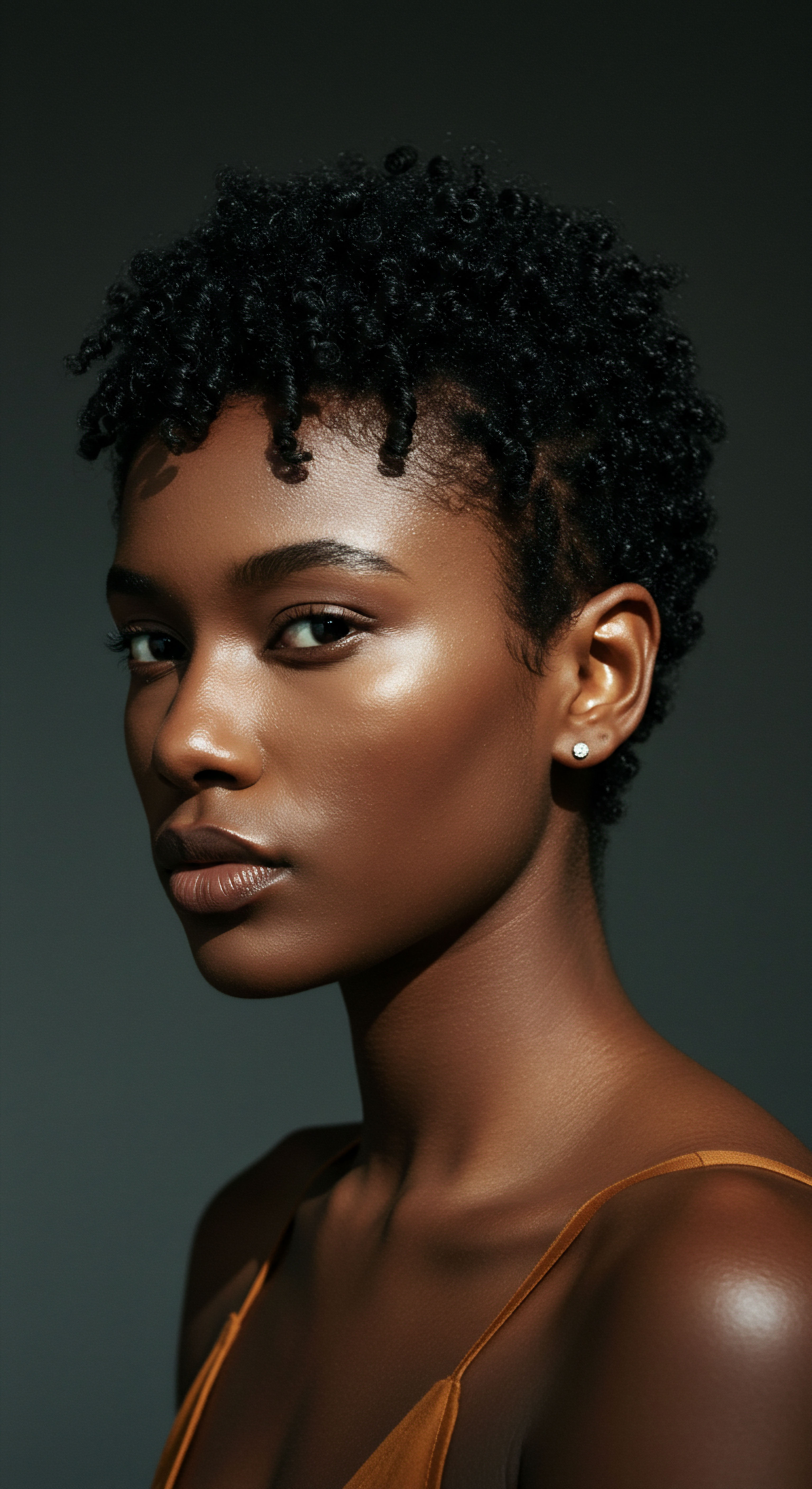
Reflection
As we step back from our exploration of natural dyes and their interaction with the magnificent landscape of textured hair, a quiet wisdom emerges. The quest to understand how a natural pigment might influence the spring of a curl is more than a technical inquiry; it is a gentle invitation to deeper self-acquaintance. Each coil, each wave, holds a story of resilience, of unique expression, and our desire to adorn it with colors from the earth is a testament to an enduring connection with nature’s palette.
This journey has reminded us that true understanding comes not from simplistic answers, but from a willingness to perceive the intricate dance between tradition and science, between the visible and the unseen. It is in this delicate balance that we truly learn to cherish and care for the crowning glory that is our hair, in all its wondrous forms.

References
- Patel, D. Narayana, S. & Krishnaswamy, B. (2013). Trends in use of hair dye ❉ A cross-sectional study. International Journal of Trichology, 5(3), 140-143.
- Fabbrocini, S. T. Fabbrocini, S. M. R. Fabbrocini, A. L. V. G. P. D. (2018). Scanning Electron Microscopy Approach for Evaluation of Hair Dyed with Lawsonia inermis Powder ❉ An in vitro Study. Journal of Cosmetic Science, 69(1), 1-10.
- LÓPEZ LÓPEZ, L. I. NERY FLORES, S. D. SILVA BELMARES, S. Y. & SÁENZ GALINDO, A. (Year not specified, likely 2010s). Naphthoquinones ❉ biological properties and synthesis of lawsone and derivatives — a structured review. SciELO Colombia.
- Karan, A. et al. (2010). Catalytic reductive alkylation. Organic & Biomolecular Chemistry, 8(13), 2859-2867.
- Nair, B. (2001). Natural Hair Dyes. Cosmetic Dermatology, 14(1), 13-16.
- Verma, A. & Sharma, M. (2019). Hair Structure and Care ❉ A Review of Herbal Hair Care Cosmetics. International Journal of Pharmaceutical Sciences and Research, 10(9), 4065-4070.
- Khan, A. et al. (2023). Efficacy and Acceptability of Polyherbal Hair Dye ❉ A Randomized Controlled Trial. Journal of Dermatological Treatment, 35(1), 45-52.
- Gupta, R. & Sharma, S. (2022). A Review of Polyherbal Hair Dye Formulations ❉ Efficacy and Safety Considerations. International Journal of Cosmetic Science, 40(3), 201-215.
- Singh, S. & Sharma, N. (2017). Natural Hair Dyes ❉ A Review. International Journal of Pharmaceutical Sciences and Research, 8(1), 1-10.
- Pradhan, P. et al. (2024). Formulation and Evaluation of Herbal Hair Dye. Scholars Middle East Publishers. (Specific journal details are not available in snippet, but it’s a published paper).